Circonstances inouïes, la vente Vichy Enchères du 9 novembre 2024 rassemblera une guitare d’Antonio de Torres (la FE21Y) et une guitare de son plus grand expert : José Luis Romanillos. Cette dernière porte l’étiquette de l’atelier de Semley, sur laquelle le célèbre luthier a ajouté, à la main et à l’encre : sa signature, la date de réalisation de la guitare de 1984, son numéro 622 et sa dénomination : “La Violeta”. Les instruments de Romanillos sont extrêmement rares sur le marché, et encore plus rares sont ceux que l’on retrouve dans les salles de ventes. Pour preuve, cette guitare est, à notre connaissance, la première à être proposée aux enchères depuis 20 ans. De grande qualité, elle offre un témoignage de la facture de Romanillos dans toute sa splendeur !
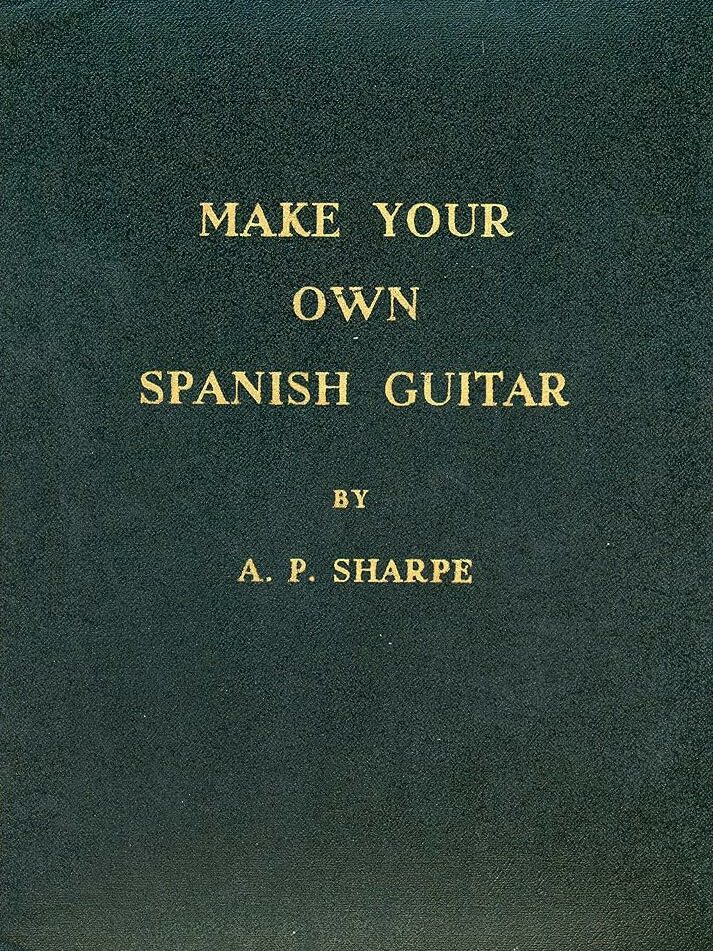
José Luis Romanillos est né en 1932 à Madrid, en Espagne. Très tôt, il montre un intérêt pour le travail du bois et, à l’âge de 13 ans, commence un apprentissage en tant qu’ébéniste dans un atelier de fabrication de meubles à Madrid. En 1956, alors âgé de 24 ans, Romanillos émigre en Angleterre. Trois ans plus tard, en 1959, il épouse Marian Harris, avec qui il aura trois fils : José Luis, Ignacio et Liam. Bien que son amour pour son pays ne l’ait jamais quitté, c’est en Angleterre que Romanillos commence à s’intéresser à la lutherie et, en 1961, il fabrique sa première guitare pour apprendre à jouer du flamenco. Il construit cet instrument avec les moyens du bord, utilisant un livre d’A.P. Sharpe, intitulé Make Your Own Spanish Guitar, comme seul guide[1].
Il baptise cette première création “Toribia”, en hommage à sa mère. En l’entendant sonner, il décide de se consacrer pleinement à la lutherie. Il va dès lors continuer de fabriquer des guitares dans sa cuisine, se perfectionnant d’année en année.
[1] Orfeo magazine n°5, printemps 2015
La grande opportunité de sa carrière se présente en 1970, alors qu’un de ses clients le présente au célèbre guitariste Julian Bream. Impressionné par le travail de Romanillos, Bream lui propose de venir installer son atelier dans une étable aménagée de sa propriété à Semley, dans le Wiltshire – une localisation qui apparaît sur l’étiquette de la guitare de la vente du 9 novembre 2024. C’est dans cet atelier que Romanillos réalise ses premières guitares en tant que luthier professionnel.
Leur collaboration culmine en 1973 avec la fabrication d’une guitare qui accompagnera Bream pendant de nombreuses années, tant dans ses concerts que dans ses enregistrements[1]. Cette guitare emblématique contribua à établir la réputation internationale de José Luis Romanillos, qui reçut par la suite des demandes d’autres grands guitaristes, tels qu’Antigoni Goni, Carles Trepat ou Miguel Javaloy.
[1] Orfeo magazine n°5, printemps 2015
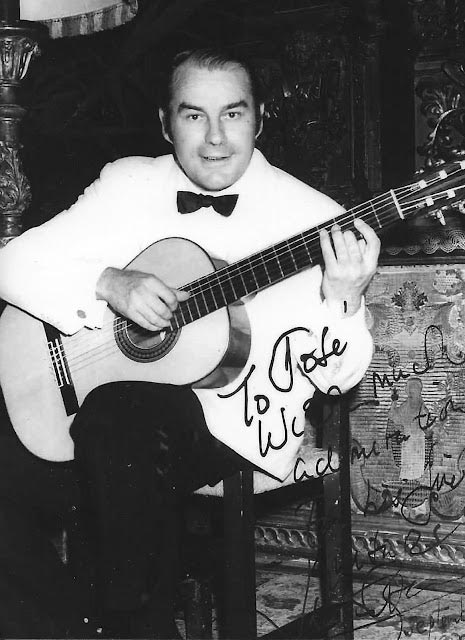
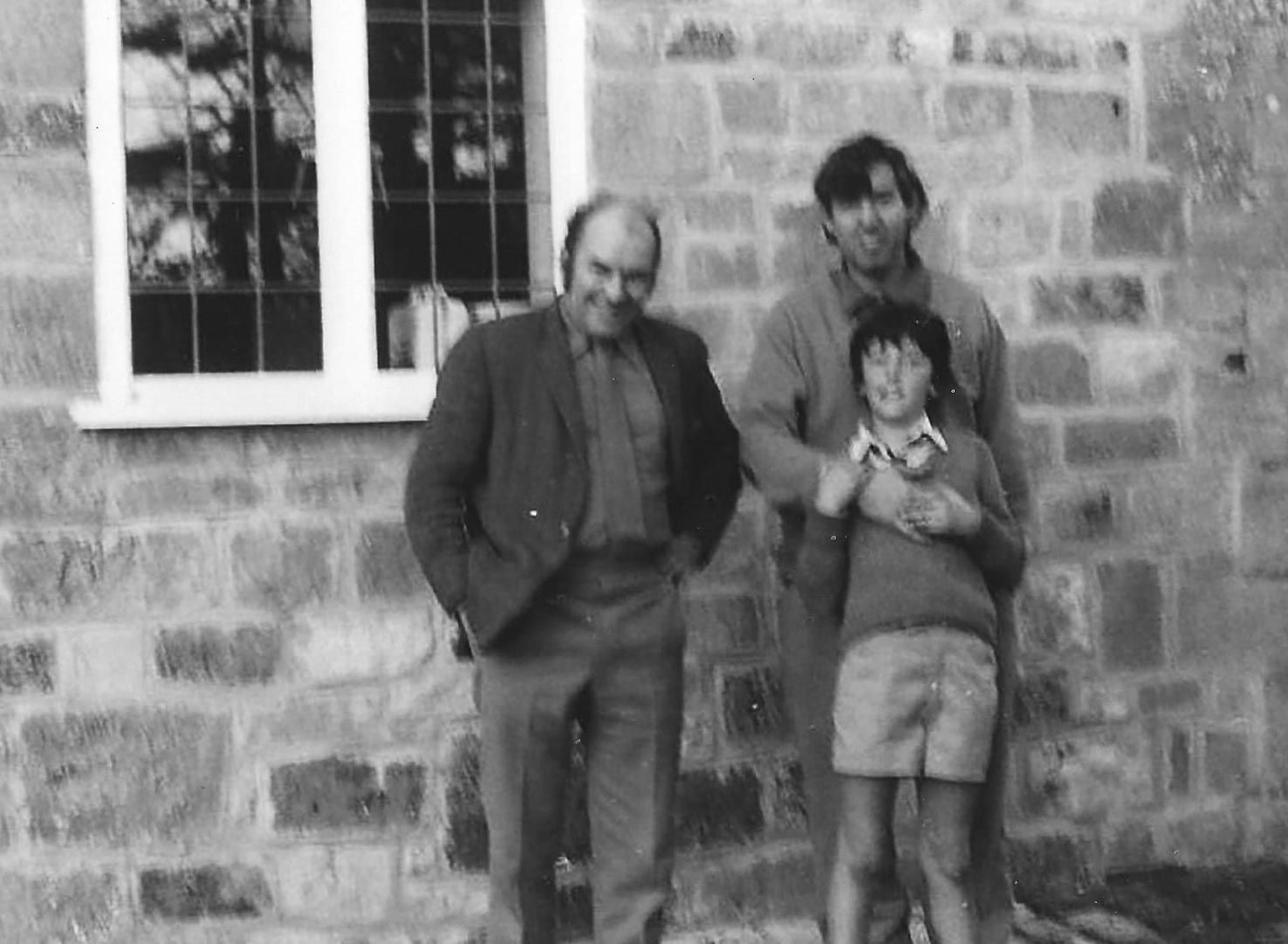
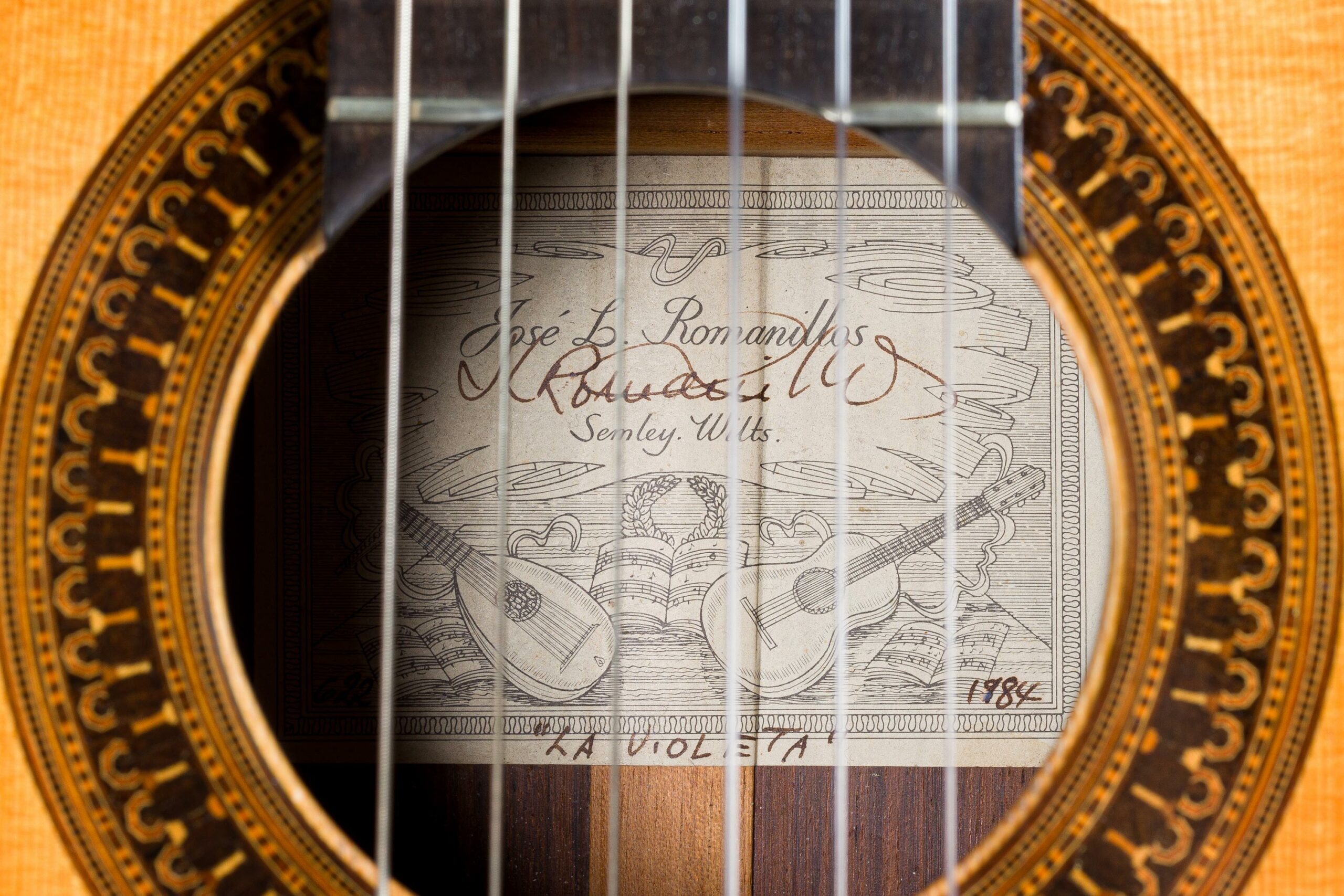
Les guitares de Romanillos s’inscrivent dans la tradition des grands luthiers espagnols, en particulier celle d’Antonio de Torres – le père de la guitare classique moderne. Romanillos a étudié minutieusement les guitares de Torres, adoptant certaines techniques, tout en y apportant ses propres innovations. Comme Torres, Romanillos croyait en l’importance de l’équilibre parfait entre légèreté et solidité dans la construction de ses instruments.
Cet équilibre est en effet essentiel pour maximiser la résonance et la projection du son,- des caractéristiques sonores propres aux guitares de Romanillos. Ses guitares sont souvent décrites comme ayant un son chaleureux, une excellente projection et une grande richesse harmonique, offrant au musicien une palette sonore étendue, allant de la douceur la plus délicate à la puissance la plus imposante.
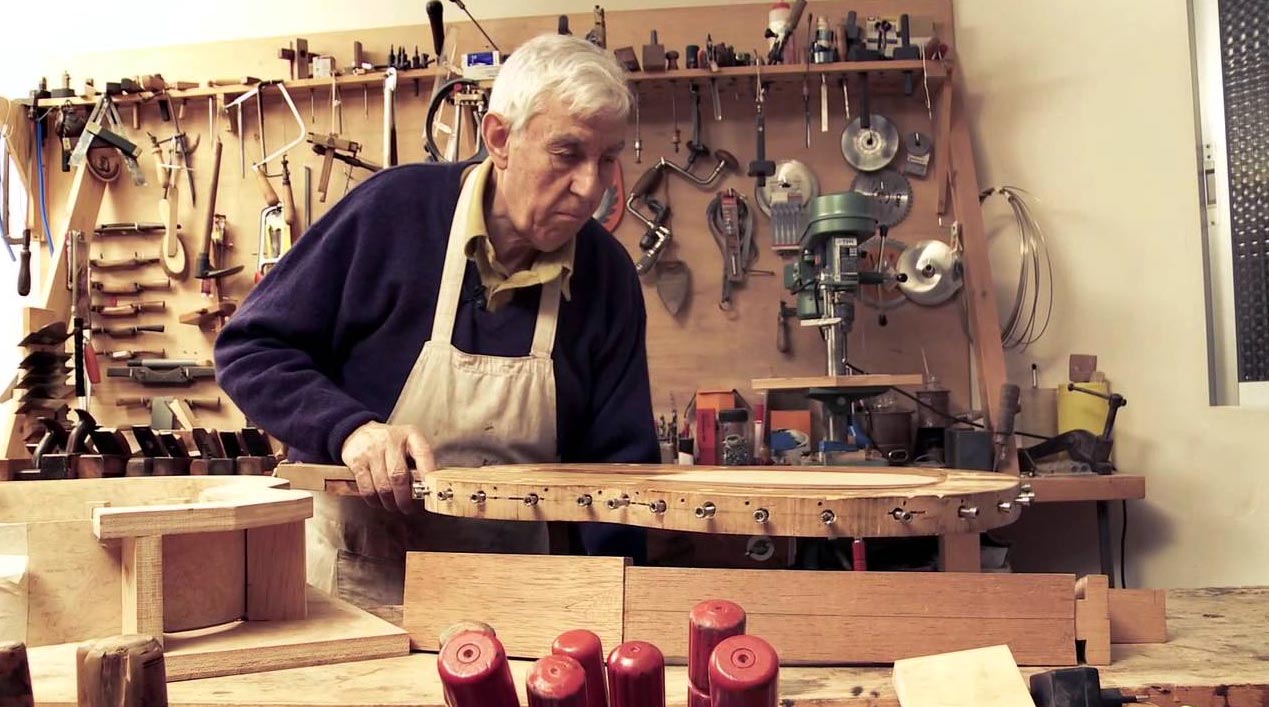
Romanillos accordait une importance capitale au choix des matériaux, considérant le bois comme l’âme de l’instrument.
“ José possède une vraie sensibilité pour le bois et il sait ce qu’il peut en tirer et par conséquent ce qu’il veut obtenir de l’instrument.”
Julian Bream, dans Orfeo magazine n°5, printemps 2015
Pour la table d’harmonie, il utilisait principalement du pin d’Abeto (épicéa), un bois qui offre une clarté et une projection exceptionnelles. Pour le dos et les éclisses, il privilégiait le palissandre, notamment celui de Rio, réputé pour sa densité et sa capacité à produire des sonorités profondes et chaleureuses. Chaque pièce de bois était soigneusement sélectionnée pour ses qualités acoustiques, son grain et son apparence, car Romanillos croyait que l’esthétique d’une guitare devait être à la hauteur de son son.
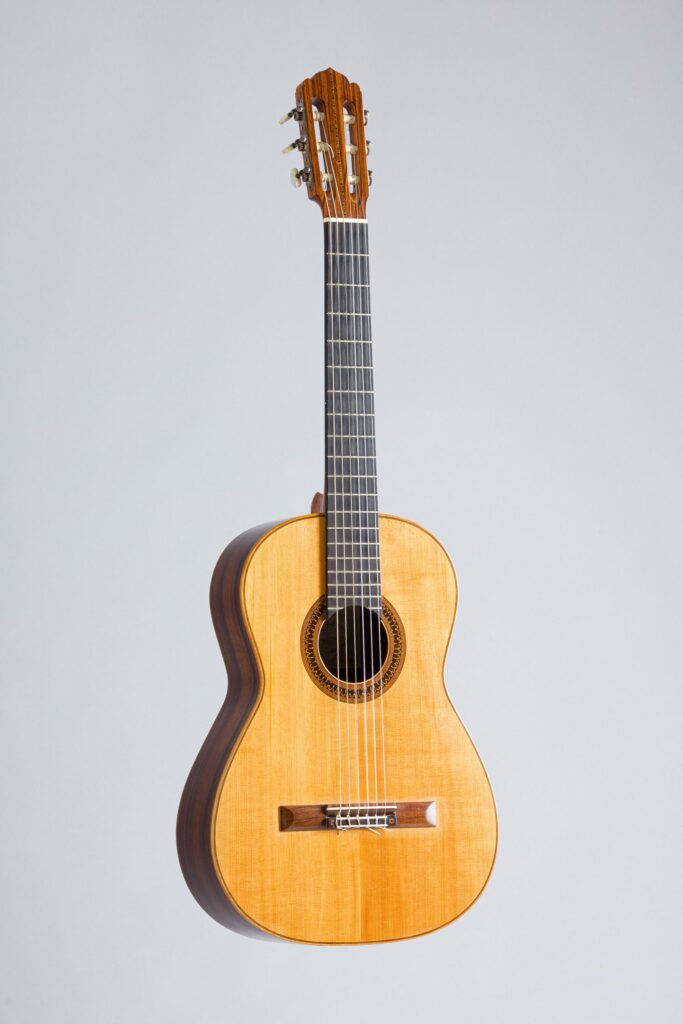
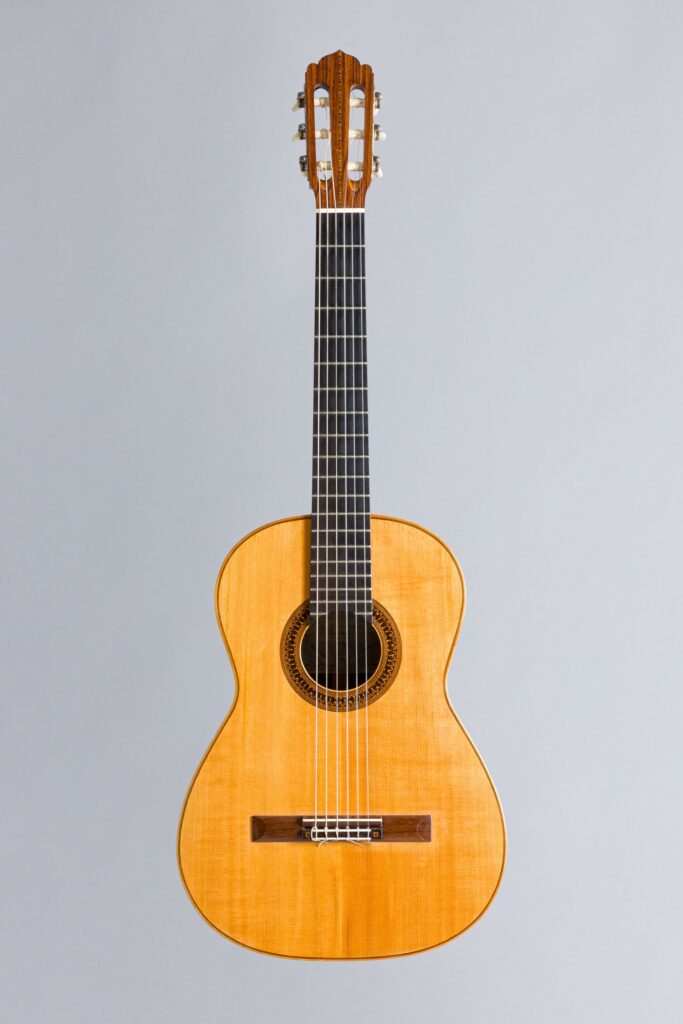
Romanillos portait une attention particulière à la construction de la table d’harmonie. Il utilisait le barrage en éventail héritée de Torres, mais avec ses propres ajustements pour améliorer la résonance et la réponse de l’instrument.
Le barrage en éventail, qui permet de répartir les vibrations de manière uniforme à travers la table d’harmonie, garantit une sonorité équilibrée, avec des basses riches et des aigus clairs et brillants.
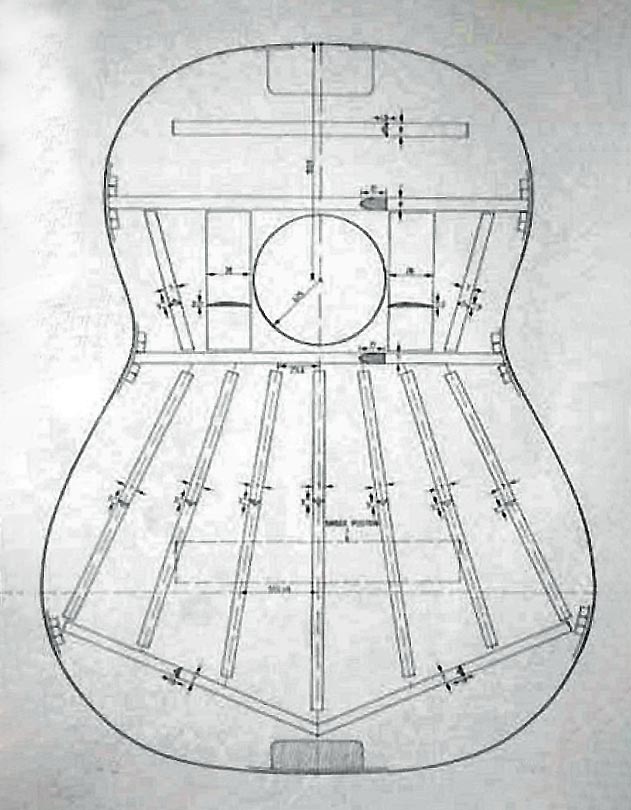
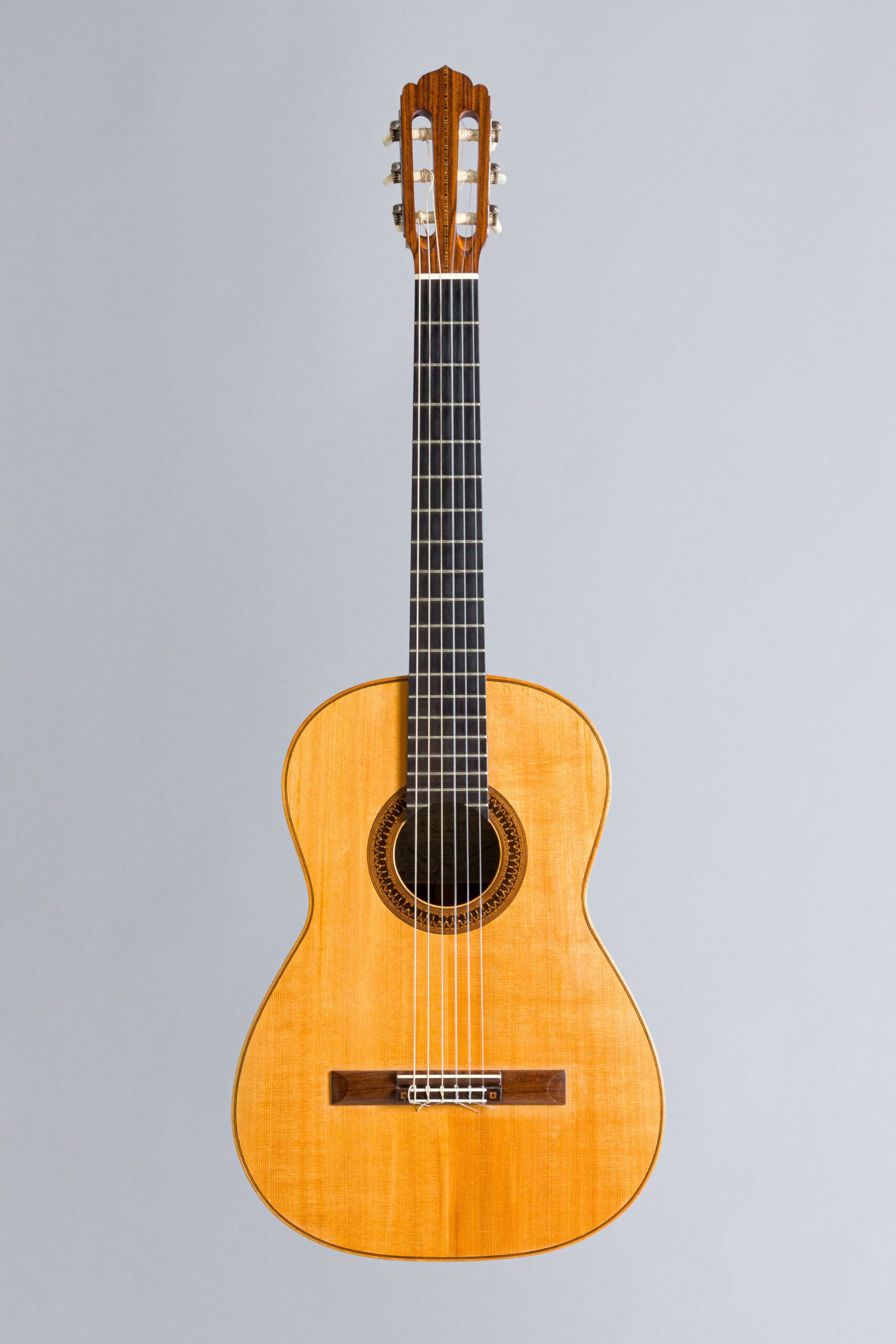
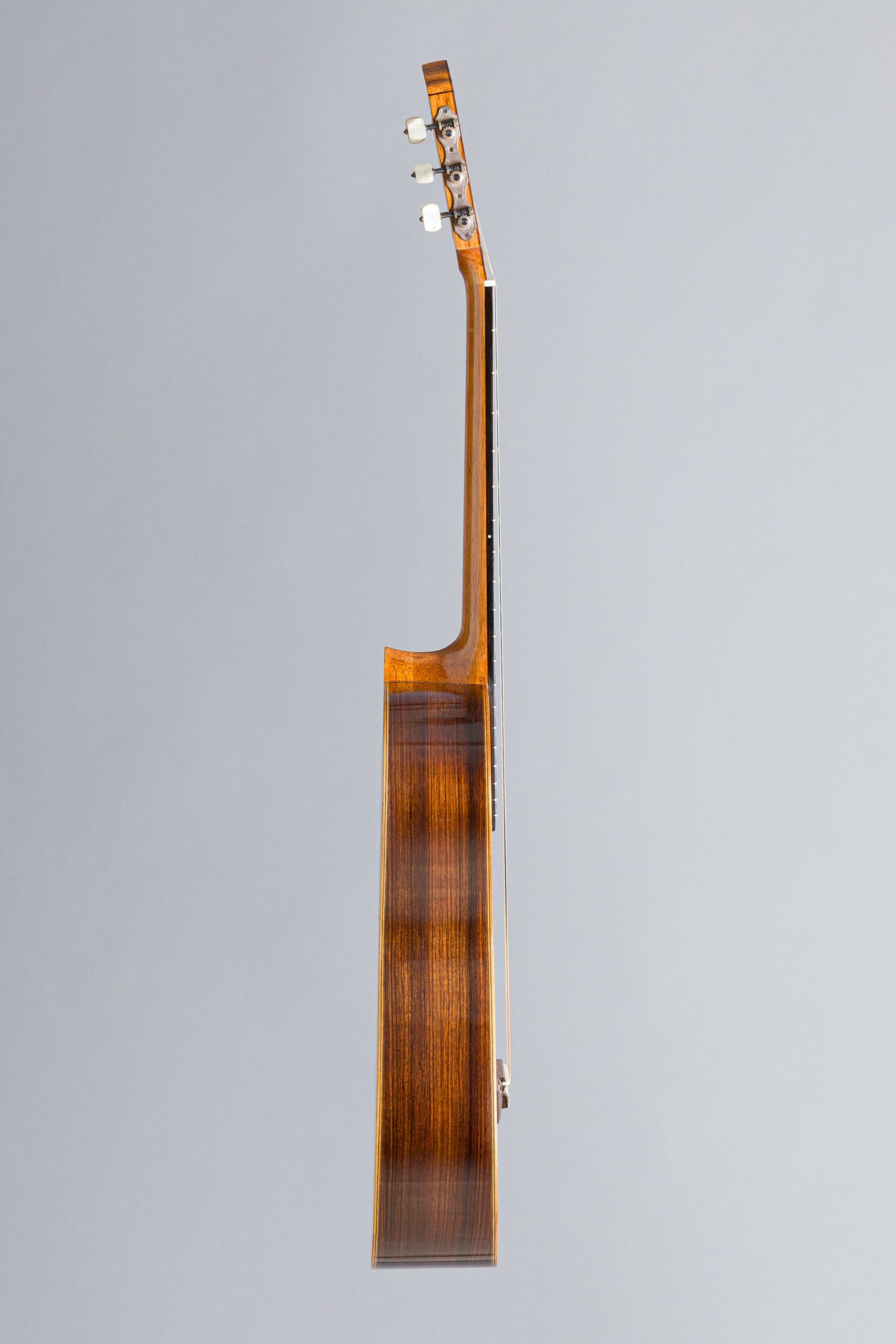
Les guitares de Romanillos sont immédiatement reconnaissables à leur esthétique épurée et élégante. Chaque détail est soigneusement pensé et exécuté avec une précision inégalée. La rosace de la guitare de la vente du 9 novembre 2024, élément distinctif de l’instrument, est un parfait exemple du savoir-faire de Romanillos et constitue, en un sens, sa signature.
Inspiré par les motifs mauresques traditionnels, il créait chaque rosace à la main, en utilisant des incrustations de bois coloré et de nacre pour former des motifs géométriques complexes. Les motifs et les couleurs composant la rosace de la guitare de la vente Vichy Enchères sont une parfaite illustration de l’inspiration que le luthier puisait dans l’observation de la cathédrale de Cordoue, et particulièrement de ses séries d’arcs outrepassés.
Les filets, bordures et autres détails ornementaux sont réalisés avec la même attention minutieuse. Romanillos aimait utiliser des bois exotiques et des techniques de marqueterie sophistiquées pour ajouter une touche de raffinement à ses instruments. Cependant, il veillait toujours à ce que l’esthétique ne compromette jamais la fonctionnalité de la guitare.
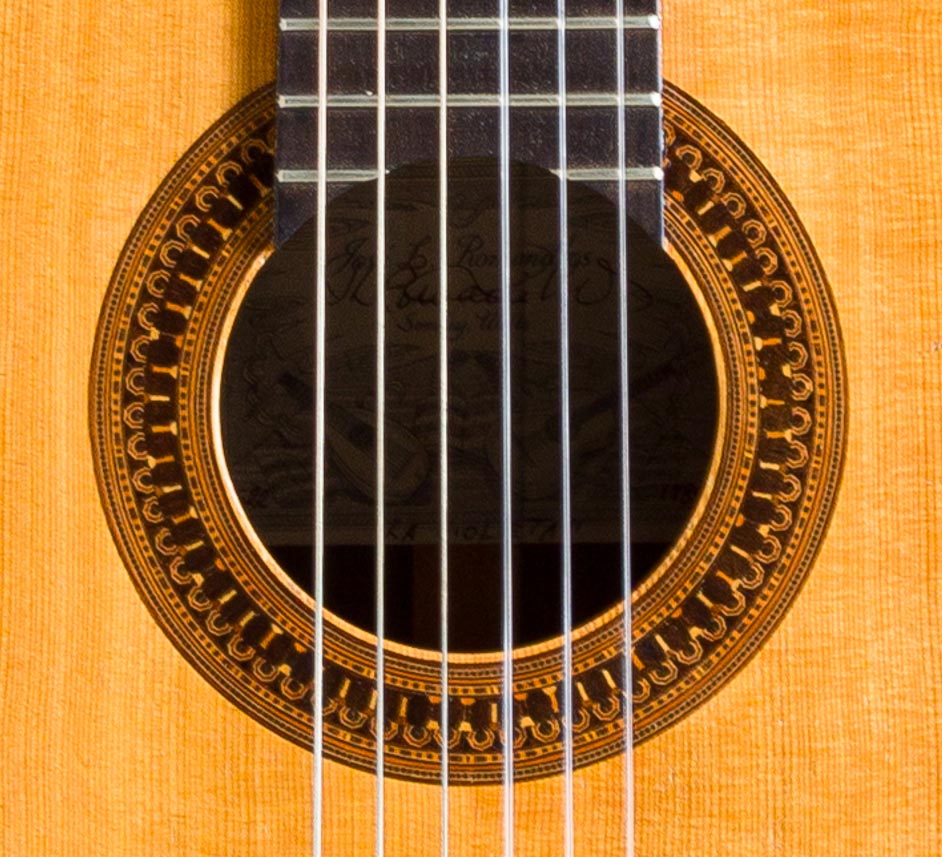
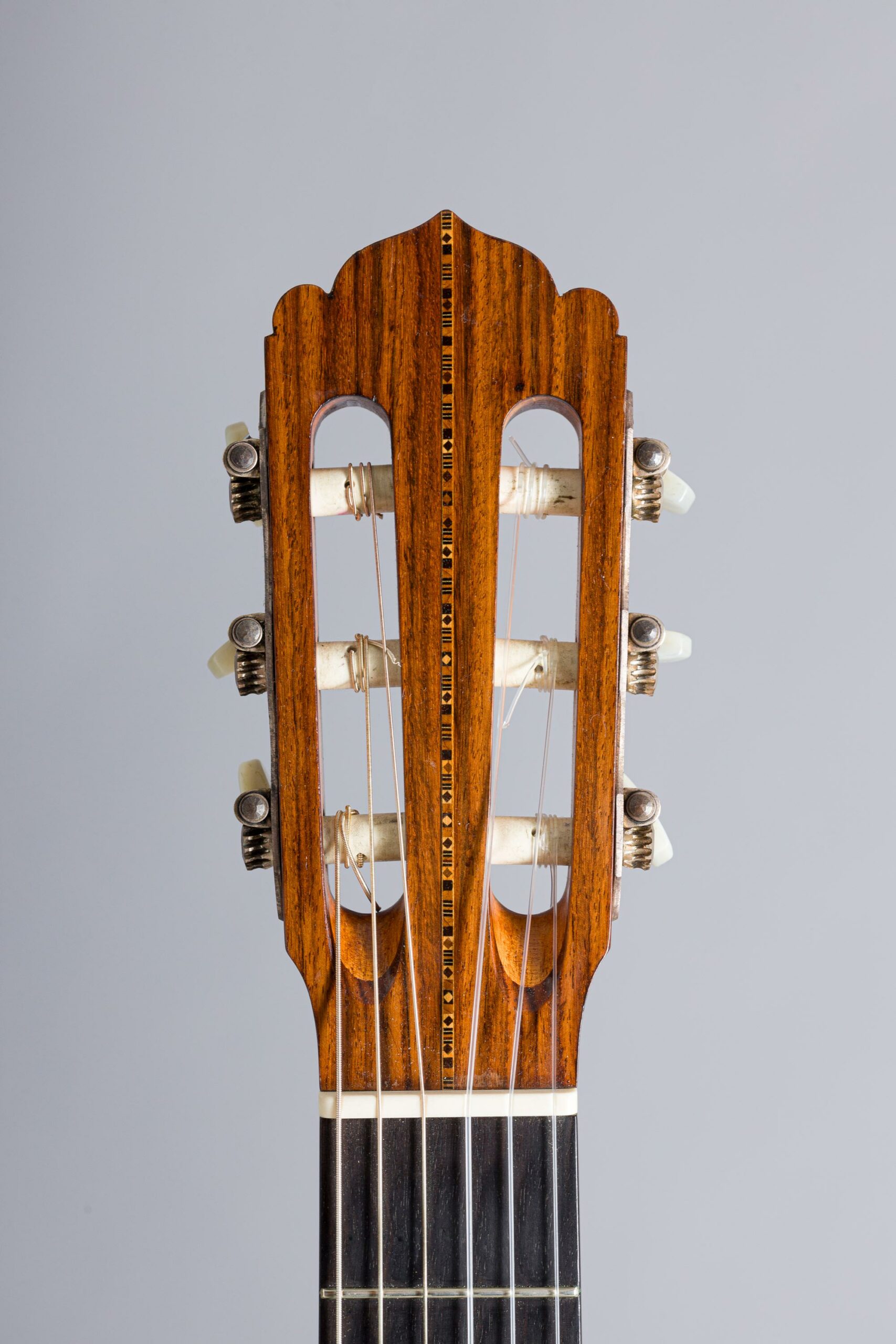
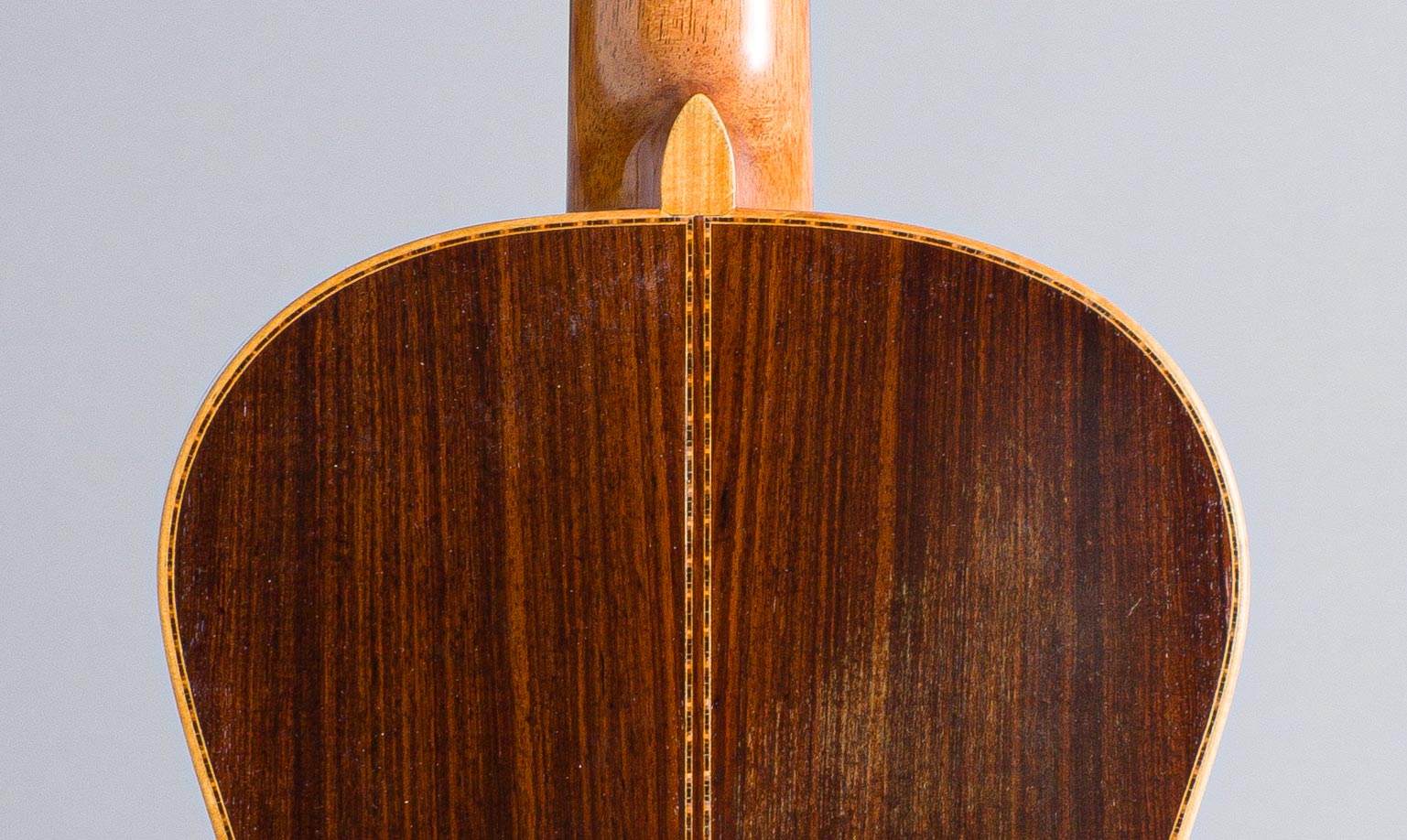
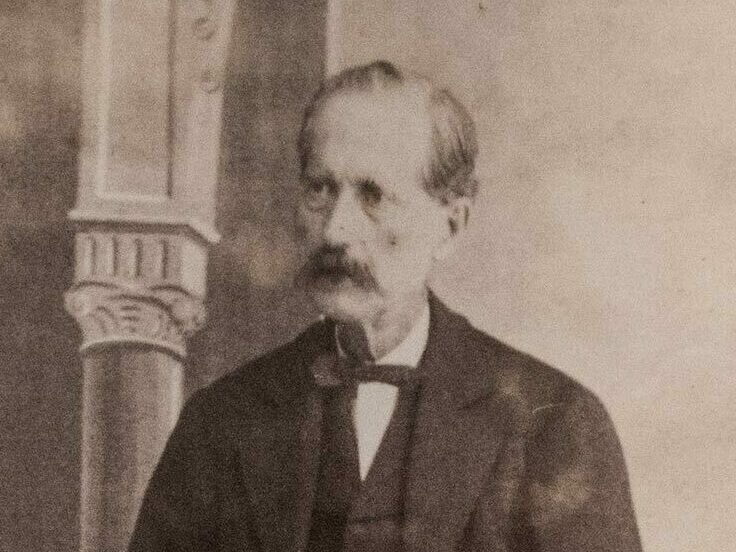
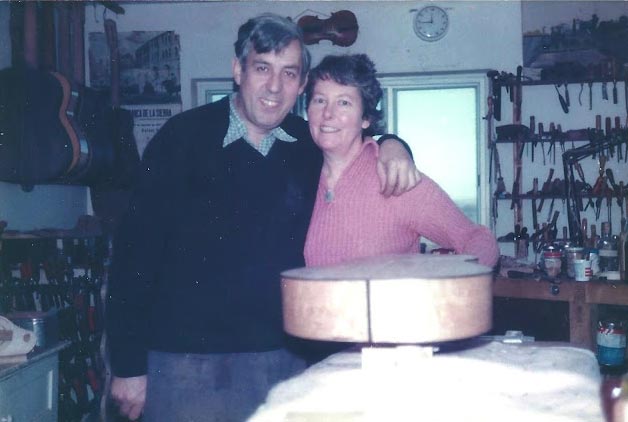
José Luis Romanillos est également reconnu pour ses recherches significatives sur l’histoire et la construction des guitares classiques, en particulier celles d’Antonio de Torres. Les recherches de Romanillos ont non seulement approfondi la compréhension de l’œuvre de Torres, mais elles ont aussi contribué à élever la lutherie à un niveau de reconnaissance académique et artistique inédit. Ses recherches ont été motivées par un profond respect pour Torres et un désir de préserver et de transmettre cet héritage aux générations futures de luthiers.
En 1987, José Luis Romanillos et son épouse, Marian Harris Winspear, ont publié l’ouvrage de référence : Antonio de Torres, Guitar Maker – His Life and Work. Ce livre, fruit de nombreuses années de recherches et d’entretiens, offre un aperçu de la vie et de l’œuvre du grand luthier d’Almería. Cet ouvrage fait aujourd’hui autorité en ce qui concerne Antonio de Torres, et avec sa publication, Romanillos est devenu le plus grand expert mondial de Torres.
Pour rédiger ce livre, Romanillos a mené des recherches méticuleuses dans les archives, étudié les instruments et recueilli des témoignages, afin d’offrir l’image la plus fidèle du luthier. Ce livre a permis de dissiper de nombreuses idées reçues sur Torres et de mieux comprendre l’impact de ses innovations sur la guitare moderne. En collaboration avec son épouse, il a créé un catalogue détaillé des instruments de Torres, fournissant des descriptions précises, des photographies et des analyses techniques. Ce catalogue est devenu un outil précieux pour les luthiers et les conservateurs, permettant de mieux comprendre l’évolution des techniques de construction et d’assurer la pérennité des instruments.
Outre son ouvrage majeur sur Torres, José Luis Romanillos a coécrit avec Marian Harris Winspear The Vihuela de Mano and the Spanish Guitar: A Dictionary of the Makers of Plucked and Bowed Musical Instruments of Spain (1200-2002). Cet ouvrage monumental recense et documente les fabricants d’instruments à cordes pincées et frottées en Espagne sur près de huit siècles. Ce dictionnaire est une ressource inestimable pour les historiens, les luthiers et les musiciens, puisqu’il offre des informations détaillées sur les luthiers espagnols et leurs contributions à l’évolution des instruments de musique.
Les recherches de Romanillos ont grandement contribué à élever la lutherie au rang de discipline académique. En documentant soigneusement les techniques de construction et en les reliant à des contextes historiques et culturels, il a permis une meilleure compréhension de l’évolution de la guitare classique en Espagne. Son travail a inspiré de nombreux luthiers et chercheurs à approfondir leurs études sur l’histoire de la guitare,- les encourageant à adopter une approche plus scientifique et rigoureuse.
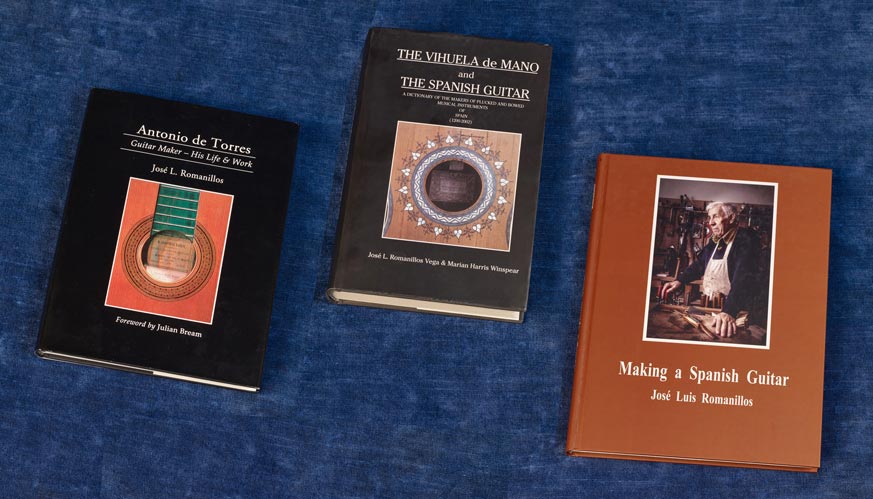
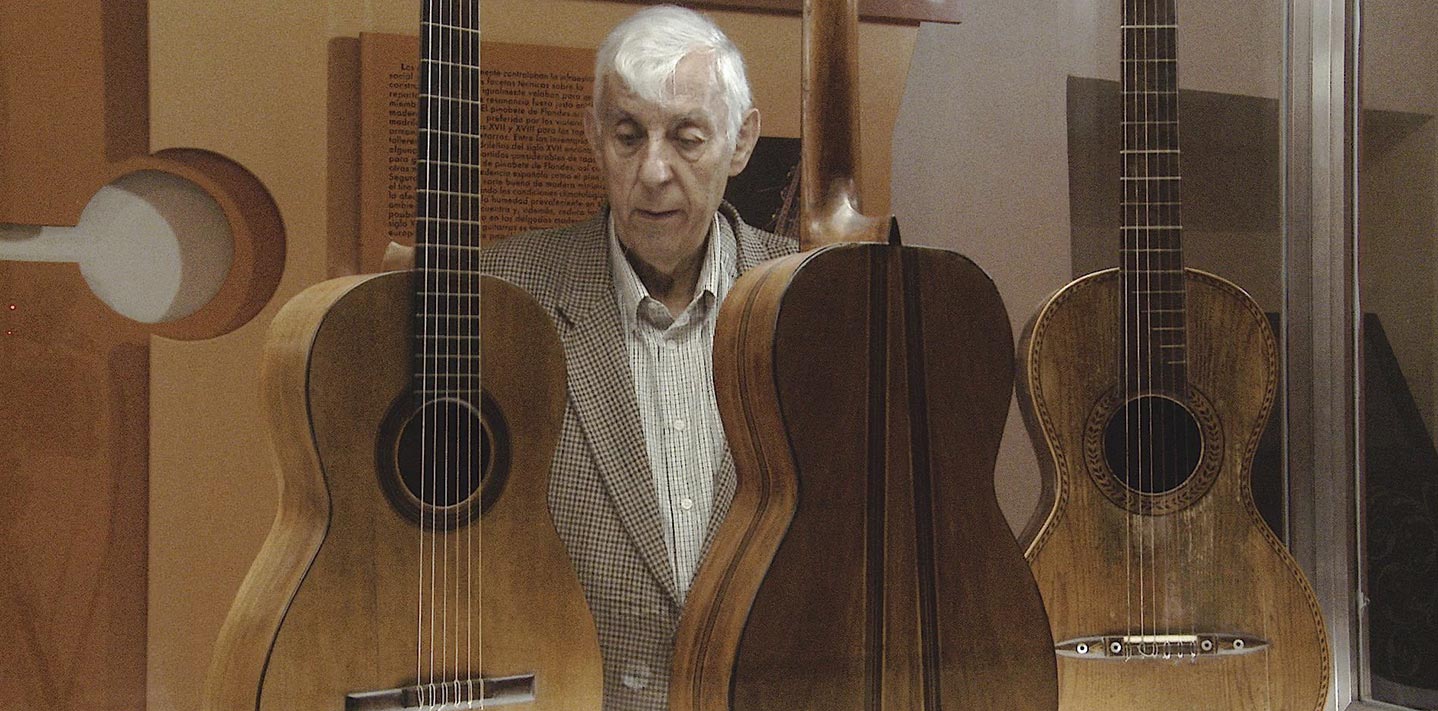
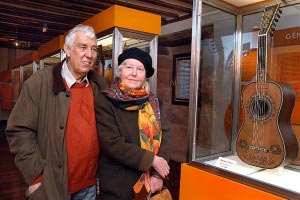
Fidèle à la tradition et désireux de recevoir l’héritage de la lutherie espagnole, Romanillos étudia les grands maîtres et constitua une impressionnante collection d’instruments, mais aussi d’archives. Avec sa femme, il est à l’origine de la création du musée de la guitare espagnole, à Sigüenza, dans la Casa del Doncel (Guadalajara, Espagne). Le musée conserve une partie de la collection de musique de Romanillos, couvrant cinq siècles de lutherie et comprenant des vihuelas et guitares, dont une Torres de 1865 proche de la FE21Y présentée dans la même vente que ce modèle de Romanillos. Le musée reconstitue également l’atelier de Santos Hernández, contremaître de l’atelier de Manuel Ramírez.
Romanillos était aussi un pédagogue passionné, qui anima de nombreux ateliers, séminaires et cours, toujours ravi de partager ses connaissances et son expertise avec des luthiers et musiciens du monde entier. Il livrait en effet volontiers ses connaissances à d’autres luthiers, enseignant et inspirant une nouvelle génération de professionnels au cours d’ateliers et de conférences. Comme il est aimé à le dire : “Je n’ai pas de secrets, je dis tout ce que je sais.”[1]
En 2002, il cofonda dans ce sens l’European Guitar Makers Association, une organisation dédiée à la promotion et à la préservation de la lutherie. Cette association joue encore aujourd’hui un rôle clé dans la mise en relation des luthiers européens.
[1] Orfeo magazine n°5, printemps 2015
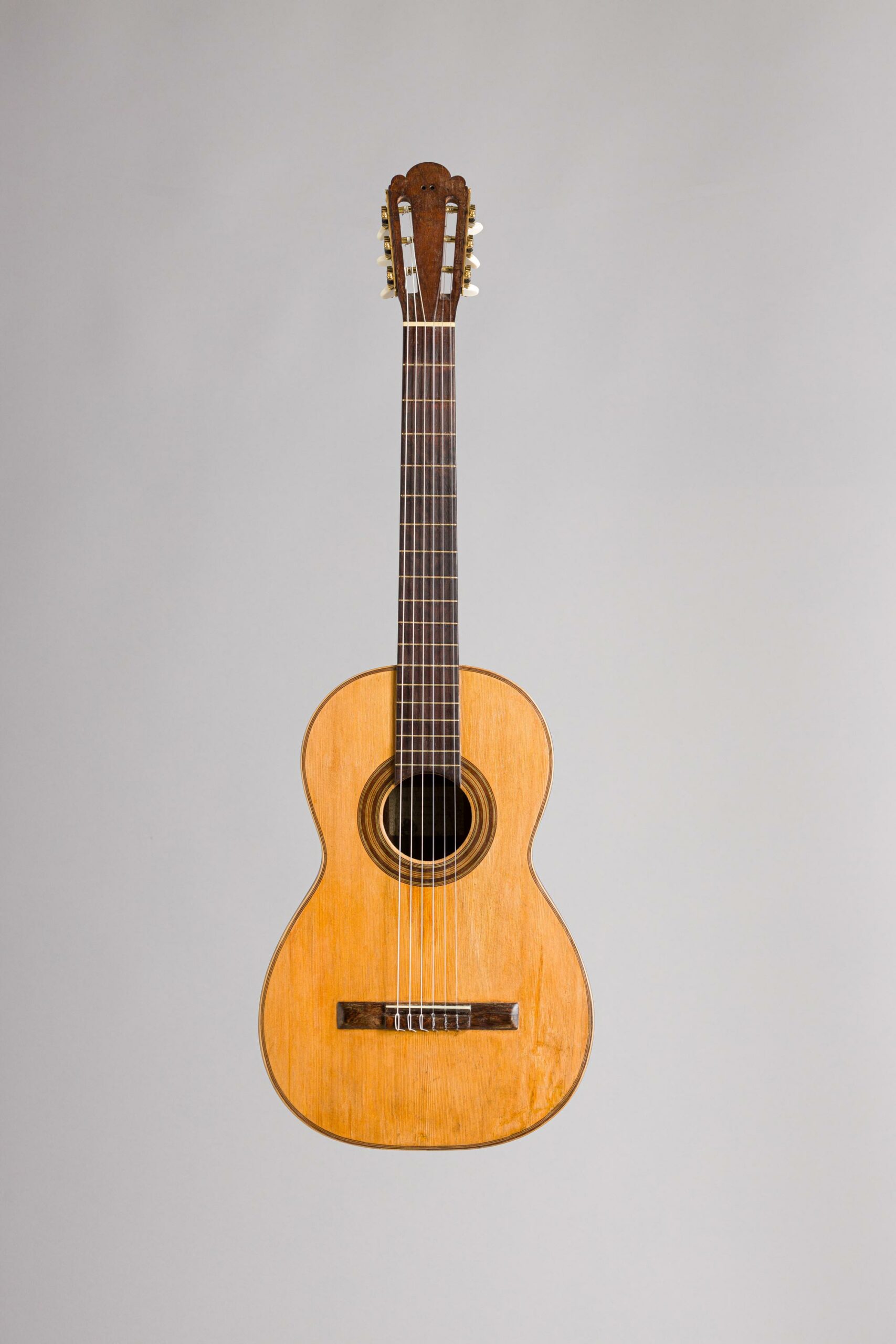
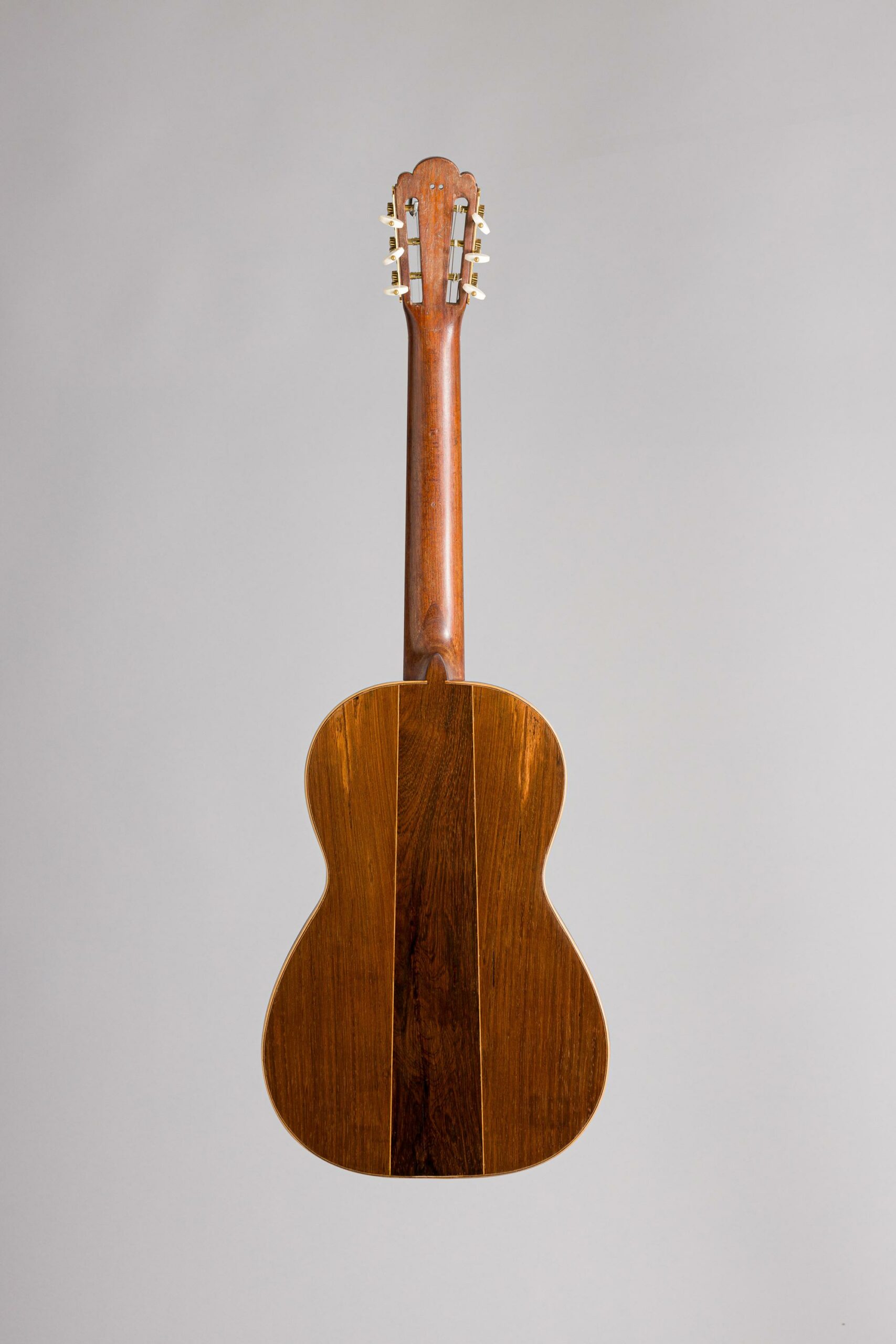
Les contributions de José Luis Romanillos à la lutherie dépassent largement la simple fabrication d’instruments. À travers ses recherches approfondies, ses publications majeures, et son rôle de pédagogue, il a élevé cet art au rang de discipline académique. Romanillos a non seulement enrichi la tradition de la guitare espagnole, mais il a aussi inspiré de nouvelles générations de luthiers à travers le monde. Son héritage, immortalisé dans ses écrits et ses instruments, continue de résonner dans le monde de la musique, garantissant sa place parmi les plus grands maîtres de la lutherie.
Vichy Enchères vous donne rendez-vous le 9 novembre 2024 pour la vente de La Violeta, une rare guitare de Romanillos. Réalisée en 1984, il s’agit du premier instrument du célèbre luthier a passé en ventes aux enchères depuis plus de vingt ans.
En très bon état et de grande qualité, ce modèle est un parfait exemple de tout le génie de Romanillos et de sa signature décorative au subtil parfum de Cordoue.
By a very fortunate coincidence, the Vichy Enchères sale of 9 November 2024 will bring together a guitar by Antonio de Torres (the FE21Y) and one by the greatest expert on this master, José Luis Romanillos. The latter bears the label of the Semley workshop, on which the famous maker inscribed, by hand and in ink, his signature, the year it was made, 1984, its number, 622, and its name, “La Violeta”. Romanillos’s instruments are extremely rare on the market, and even rarer are those found in auction rooms. Indeed, to our knowledge, this guitar is the first to be presented at auction in 20 years. It is an instrument of great quality, and a testimony to Romanillos’s craftsmanship in all its glory.

José Luis Romanillos was born in 1932 in Madrid, Spain. He showed an interest in woodworking from an early age and, aged 13, began an apprenticeship as a cabinetmaker in a furniture workshop in Madrid. In 1956, aged 24, Romanillos moved to England. Three years later, in 1959, he married Marian Harris, with whom he had three sons: José Luis, Ignacio and Liam. Although his love for his country never left him, it was in England that Romanillos began to take an interest in guitar making and, in 1961, he made his first guitar so he could learn to play flamenco. He built this instrument with what he had at hand, and with the sole guidance of the instruction manual Make Your Own Spanish Guitar, by A.P. Sharpe[1].
He named this first creation “Toribia”, in homage to his mother. After hearing its sound, he decided to devote himself fully to guitar making. He continued making guitars in his kitchen, perfecting his skills year after year.
[1] Orfeo magazine n°5, printemps 2015
The breakthrough in his career came in 1970, when one of his clients introduced him to the famous guitarist Julian Bream. Bream was impressed by Romanillos’s work and offered him the chance to set up his workshop in a converted stable on his property in Semley, Wiltshire – the location that features on the label of the guitar in the sale of 9 November 2024. It was in this workshop that Romanillos made his first guitars as a professional maker.
Their collaboration culminated in 1973 with the creation of a guitar that would accompany Bream for many years, and that he used for both concerts and recordings[1]. This iconic guitar helped establish José Luis Romanillos’s international reputation, and resulted in commissions from other great guitarists, such as Antigoni Goni, Carles Trepat and Miguel Javaloy.
[1] Orfeo magazine n°5, printemps 2015



Romanillos’s guitars follow in the footsteps of the great Spanish guitar making tradition, and are particularly influenced by Antonio de Torres – the father of the modern classical guitar. Romanillos studied Torres’s guitars closely, adopting certain of his techniques while also introducing his own innovations. Like Torres, Romanillos believed in the importance of the perfect balance between lightness and strength in the construction of his instruments.
This balance is essential to maximize the resonance and projection of the sound, and is typical of Romanillos’s guitars. His guitars are often described as having a warm sound, excellent projection and great harmonics, offering the player a wide range of tones, from the most delicate sweetness to the most imposing power.

Romanillos placed great importance on the choice of materials, and he thought of the wood as the soul of the instrument.
“José has a real sensitivity for wood and he knows what he can get out of it and therefore what he wants out of the instrument.”
Julian Bream, dans Orfeo magazine n°5, printemps 2015
For the front, he mainly used Abeto pine (spruce), a wood that offers exceptional clarity and projection. For the back and sides, he favoured rosewood, especially Rio rosewood, known for its density and its ability to produce deep and warm tones. Each piece of wood was carefully selected for its acoustic qualities, grain and appearance, as Romanillos believed that a guitar’s appearance should match its sound.


Romanillos paid particular attention to the construction of the front. He used the fan bracing system inherited from Torres, but with his own adjustments to improve the instrument’s resonance and response.
The fan bracing, which helps spread the vibrations evenly across the front, contributes to a balanced tone, with rich bass notes and bright, clear high notes.



Romanillos guitars are instantly recognizable for their sleek, elegant appearance. Every detail has been carefully thought out and executed with unparalleled precision. The rosette on the guitar in the sale of 9 November 2024, which is a distinctive feature of the instrument, is a perfect example of Romanillos’s craftsmanship and, in a sense, his trademark.
Inspired by traditional Moorish motifs, he created each rosette by hand, using coloured wood and mother-of-pearl inlays to form intricate geometric patterns. The patterns and colours composing the rosette on the guitar in the Vichy Enchères sale are a perfect illustration of the inspiration the maker drew from observing the Cathedral of Cordoba, and particularly its series of horseshoe arches.
The purfling, borders and other ornamental details are executed with the same meticulous attention to detail. Romanillos was very fond of exotic woods and sophisticated inlaying techniques to add a touch of refinement to his guitars. However, he was always careful to ensure that aesthetics never compromised the functionality of the instrument.





José Luis Romanillos is also recognized for his significant research into the history and construction of classical guitars, particularly those of Antonio de Torres. Romanillos’s research not only deepened our understanding of Torres’s work, but also helped elevate guitar making to a new level of academic and artistic recognition. His research was motivated by a deep respect for Torres and a desire to preserve and pass on this legacy to future generations of makers.
In 1987, José Luis Romanillos and his wife, Marian Harris Winspear, published the seminal work Antonio de Torres, Guitar Maker – His Life and Work. This book, the result of many years of research and interviews, offers an insight into the life and work of the great master from Almería. To this day, this work is the reference publication on Antonio de Torres, and, with it, Romanillos became the world’s leading expert on Torres.
In order to provide the most accurate depiction of the maker for this book, Romanillos conducted meticulous research into historical archives, studied the instruments and collected testimonies. This book has helped to dispel many preconceived notions about Torres and to better understand the impact of his innovations on the modern guitar. Together with his wife, he has created a detailed catalogue of Torres’s instruments, providing precise descriptions, photographs and technical analyses. This catalogue has become a valuable tool for guitar makers and museum conservators, allowing them to better understand the evolution of the construction techniques, as well as ensuring the instruments are correctly preserved.
In addition to his major work on Torres, José Luis Romanillos co-authored with Marian Harris Winspear The Vihuela de Mano and the Spanish Guitar: A Dictionary of the Makers of Plucked and Bowed Musical Instruments of Spain (1200-2002). This monumental work lists and documents the makers of plucked and bowed string instruments in Spain over nearly eight centuries. This dictionary is an invaluable resource for historians, makers and musicians, as it offers detailed information on Spanish makers and their contributions to the evolution of musical instruments.
Romanillos’s research has greatly contributed to conferring upon guitar making the status of an academic discipline. By carefully documenting construction techniques and placing them in their historical and cultural context, he provided a better understanding of the evolution of the classical guitar in Spain. His work has inspired many makers and researchers to further their studies of the history of the guitar, encouraging them to adopt a more scientific and rigorous approach.



Romanillos was keen to preserve traditions and perpetuate the legacy of Spanish guitar making, which led him to study the great masters and build up an impressive collection of instruments, but also of historical documents. Together with his wife, he contributed to the creation of the Spanish Guitar Museum, in Sigüenza, in the Casa del Doncel (Guadalajara, Spain). The museum preserves part of Romanillos’s instrument collection, spanning five centuries of guitar making, and which includes vihuelas and guitars, most notably an 1865 Torres guitar similar to the FE21Y presented in the same sale as this Romanillos example. The museum also features a reconstruction of the workshop of Santos Hernández, the workshop assistant of Manuel Ramírez.
Romanillos was also a passionate teacher, who led many workshops, seminars and courses, always keen to share his knowledge and expertise with makers and musicians from all over the world. Through workshops and conferences, he taught and inspired a new generation of guitar makers. As he used to say: “I have no secrets, I tell everything I know.”[1]
In 2002, he co-founded the European Guitar Makers Association, an organization whose aim is the promotion and preservation of guitar making. This association still plays a key role today in connecting European makers.
[1] Orfeo magazine n°5, printemps 2015


José Luis Romanillos’s contributions to guitar making go far beyond the mere making of instruments. Through his extensive research, major publications, and role as a teacher, he conferred upon the art of guitar making the prestige of an academic discipline. Romanillos not only contributed to the tradition of the Spanish guitar, but also inspired new generations of makers around the world. His legacy, immortalized in his writings and instruments, continues to resonate in the world of music, ensuring his place among the greatest masters of guitar making. Vichy Enchères invites you on 9 November 2024 for the sale of La Violeta, a rare guitar by Romanillos. This instrument made in 1984 is the first one by the famous maker to go to auction in over 20 years. This example, which is in very good condition and of high quality, is a perfect example of the genius of Romanillos and features his ornate signature evocative of Cordoba.